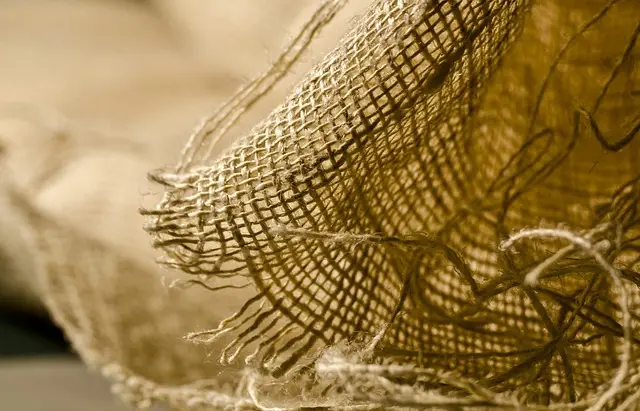In Salt Lake City (SLC), a local guide promotes urban cultivation of kratom, a natural supplement that can aid in athletic recovery by managing pain, enhancing energy, and reducing stress. This guide provides essential tips for growing kratom within SLC's environment, focusing on soil types, temperature, humidity, and light to create optimal conditions for these plants. It also offers advice on selecting the right kratom strains for individual recovery needs and maintaining plant health year-round. Local experts emphasize responsible use, guiding athletes on dosage and timing to complement their recovery strategies alongside other techniques. Grow Kratom SLV, a SLC-based cultivator, supplies high-quality, sustainably sourced kratom products that can be integrated into an athlete's regimen under professional guidance. Given the plant's controlled status and unknown long-term effects, athletes are cautioned to use kratom judiciously while adhering to local regulations. For those interested in incorporating kratom into their holistic training approach, personalized usage tailored to specific sports and training rigors is recommended, along with consulting healthcare professionals for safety and effectiveness. In Salt Lake City's athletic community, kratom is recognized as a valuable addition to recovery practices, with athletes encouraged to explore its effects on muscle recovery, energy levels, and cognitive clarity, always in conjunction with a balanced recovery plan including diet, hydration, rest, and exercise.
Embark on a journey to enhance athletic recovery and performance with the guidance of kratom coaching, a transformative approach rooted in the unique conditions of Salt Lake City. This article unveils the potential of kratom, a naturally occurring compound, to alleviate muscle soreness and bolster athletic prowess. We’ll delve into strategies for cultivating kratom in urban environments, such as SLC, with the help of ‘grow kratom SLV’ insights. Further, we’ll outline steps to create a tailored kratom recovery plan, ensuring sustainable athletic performance improvements. Join us as we explore the intersection of botanical wisdom and modern sports science for optimal athlete well-being and peak performance.
- Maximizing Athletic Recovery Through Kratom Coaching and Expertise in SLC: A Guide to Growing Kratom in Urban Settings
- Understanding Kratom's Role in Muscle Soreness Relief and Performance Enhancement for Athletes
- Crafting Your Personalized Kratom Recovery Plan: Best Practices for Sustainable Athletic Performance in Salt Lake City
Maximizing Athletic Recovery Through Kratom Coaching and Expertise in SLC: A Guide to Growing Kratom in Urban Settings

In Salt Lake City, athletes seeking to enhance their recovery processes have a unique opportunity to leverage kratom coaching for optimal performance and well-being. This guide delves into the nuances of growing kratom in urban settings within SLC, offering insights that can be pivotal for those looking to incorporate this natural supplement into their athletic regimen. Kratom, a tropical evergreen tree native to Southeast Asia, has gained attention for its potential benefits in pain management, energy boosts, and stress relief—all of which are crucial for athletes in recovery. By understanding how to cultivate kratom locally, coaches can provide their clients with a sustainable source of the plant, ensuring quality and potency while avoiding the complexities of importation or unreliable market sources. Growing kratom in SLC requires careful attention to soil conditions, temperature, humidity, and light exposure, factors that are typically manageable within controlled urban environments. This guide provides step-by-step instructions for setting up an optimal growing space, selecting the right strain for personalized athletic recovery needs, and maintaining a healthy kratom garden that can support an athlete’s training and recovery cycle year-round.
Leveraging the expertise of experienced kratom growers and coaches in Salt Lake City provides athletes with a distinct advantage. These professionals not only guide clients through the cultivation process but also educate them on the responsible use of kratom as part of their holistic health strategy. The coaching aspect is particularly vital, as it ensures that athletes are fully informed about the appropriate dosage, timing, and combination with other recovery modalities to achieve the best results without overstepping boundaries or risking adverse effects. By integrating kratom cultivation into their training facilities, coaches can offer a hands-on approach to recovery, tailoring the experience to each athlete’s unique needs and goals. This innovative approach to athletic recovery not only promotes self-sufficiency but also fosters a deeper connection with nature and the source of the remedy, ultimately contributing to a more sustainable and healthier lifestyle for athletes in SLC.
Understanding Kratom's Role in Muscle Soreness Relief and Performance Enhancement for Athletes

Kratom, a plant native to Southeast Asia, has garnered attention in various sectors including athletic recovery due to its potential effects on muscle soreness and performance enhancement. The active compounds found in kratom leaves, known as mitragynine and 7-hydroxymitragynine, are believed to interact with the body’s opioid receptors, which can lead to pain relief and improved mood. For athletes engaged in rigorous training or competition, muscle soreness is a common concern that can hinder recovery and affect performance. Kratom may offer a natural alternative for managing post-exercise discomfort by modulating pain signals and reducing inflammation. Additionally, some athletes report an increase in stamina and a decrease in fatigue when using kratom, which can be advantageous for endurance-based activities. However, it’s crucial for athletes to approach the use of kratom with caution, as it is a controlled substance in many countries and its long-term effects are still under investigation. Those interested in incorporating kratom into their recovery regimen should consult with healthcare professionals and adhere to local regulations.
Grow Kratom SLV, a local cultivator based in Salt Lake City (SLC), provides athletes with access to high-quality kratom products that can be carefully integrated into their training and recovery protocols. The company’s commitment to sustainable and ethical farming practices ensures that the kratom is pure and potent, offering the potential benefits without the risks associated with adulterated or mislabeled products often found on the market. Athletes looking to enhance their recovery process and potentially improve performance should consider Grow Kratom SLV’s offerings as a complementary tool in their holistic approach to athletic training and competition. As with any supplement, it’s essential for athletes to monitor their responses and adjust their usage accordingly, focusing on maintaining peak physical condition while minimizing the risk of adverse effects.
Crafting Your Personalized Kratom Recovery Plan: Best Practices for Sustainable Athletic Performance in Salt Lake City

Incorporating kratom into an athletic recovery regimen in Salt Lake City requires a tailored approach that aligns with individual physiology and athletic goals. Growing interest in kratom, as indicated by the burgeoning grow kratom SLC community, underscores its increasing role in holistic health strategies. Athletes seeking to optimize their recovery can benefit from a personalized kratom recovery plan that considers the unique demands of their sport and the intensity of their training. This plan should be developed with guidance from experienced coaches who are well-versed in both kratom’s properties and athletic performance metrics. By monitoring the effects of different kratom strains on muscle soreness, energy levels, and mental focus, athletes can fine-tune their intake for peak performance during Salt Lake City’s diverse training environments—be it the high-altitude trails or state-of-the-art gym facilities. It’s crucial to maintain open communication with healthcare providers, as kratom interactions with other medications should be carefully managed. Additionally, a well-rounded recovery strategy should also include proper nutrition, hydration, rest, and mobility work to complement the use of kratom, ensuring a holistic approach to athletic well-being and sustained performance.
In conclusion, athletic recovery can be significantly optimized through the strategic application of kratom coaching and a deep understanding of its effects on muscle soreness and performance enhancement. For those in Salt Lake City, the unique opportunity to grow kratom SLG (sustainable local growth) presents a natural pathway to harness its benefits. By crafting a personalized kratom recovery plan based on expert guidance and tailored to individual needs, athletes can achieve sustainable performance improvements. This comprehensive approach not only enhances athletic recovery but also supports the local economy and promotes environmentally friendly practices. Embracing the potential of kratom coaching can lead to a transformative experience for athletes seeking to elevate their game in a natural, effective manner.






